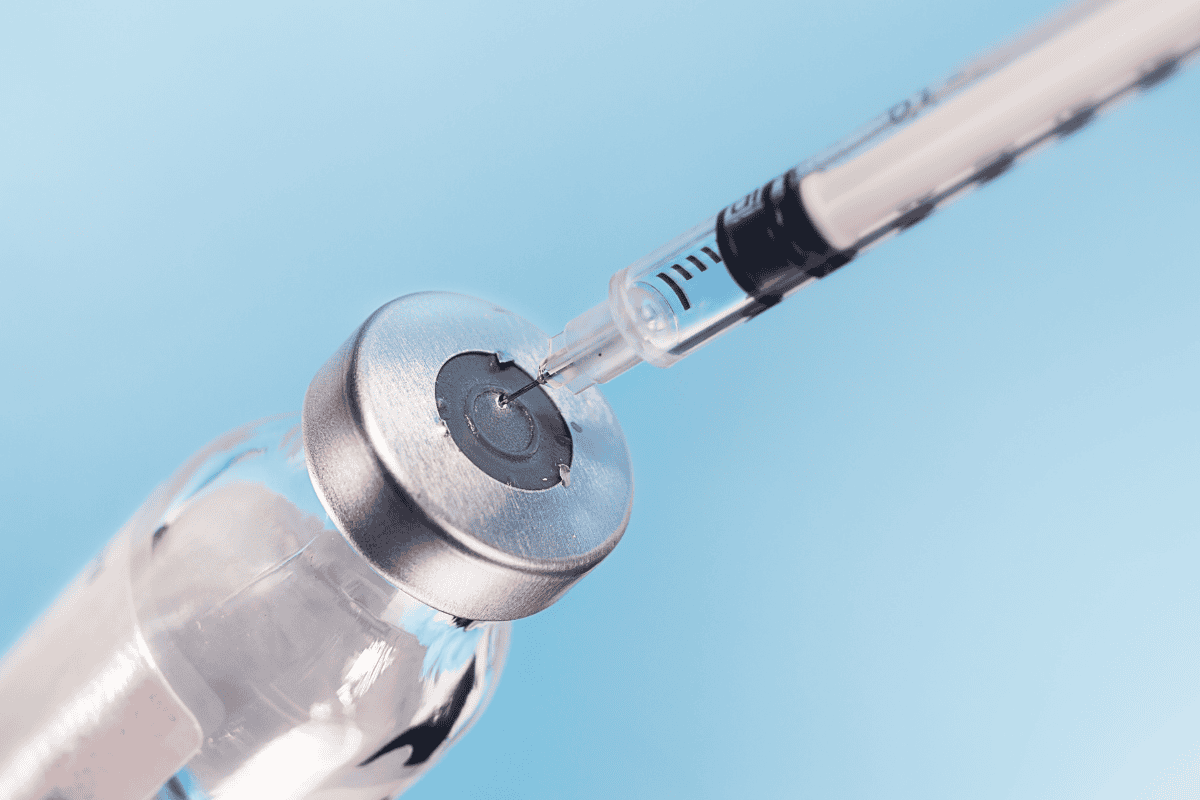Do you struggle with knee pain? About one in four Americans over 60 experience knee pain. Knee pain can result from various causes, including arthritis, injury, or overuse, and can affect individuals of any age. Knee injections have emerged as a particularly effective method for managing pain and enhancing mobility alongside other treatment options.
Osteoarthritis of the knee is the primary cause of chronic disability in the United States and leads to joint damage. This condition progresses slowly, and the associated pain worsens over time. While there is no cure for osteoarthritis, knee joint injections offer a viable means of pain management for individuals experiencing this condition.
At AMA Medical Group, we understand the significance of finding effective treatments for knee pain. If you are experiencing knee pain, read more about various treatment options.

What is a Knee Injection?
A knee injection involves injecting medication directly into the knee joint to relieve inflammation and pain. Hyaline cartilage, rich in hyaluronic acid, covers the ends of the bones in the joints, allowing for smooth movement between them. This cartilage acts as a lubricant for the joint.
In osteoarthritis, the concentration of hyaluronic acid in the joints decreases, resulting in cartilage breakdown. As a result, the bones in the joint rub abnormally against each other, leading to symptoms such as pain, stiffness, and swelling.
Conditions Treated with Knee Injections
Physicians utilize knee injections to address and potentially diagnose pain stemming from various knee joint conditions. Some common reasons include:
- Pain Management: Injections containing corticosteroids, local anesthetics, or other pain-relieving medications can effectively alleviate knee pain associated with osteoarthritis, rheumatoid arthritis, bursitis, and similar conditions. The choice of medication and injection frequency varies based on the underlying cause of the pain.
- Diagnosis: Injecting a dye can aid in visualizing the affected area on an X-ray, facilitating the identification of the source of knee pain.
- Treatment: Therapeutic medications injected directly into the knee joint can help lubricate it, reduce inflammation-related pain, and improve joint mobility.
Knee injections are a beneficial treatment option when other pain management techniques, like physical therapy and over-the-counter pain medications, have not produced the desired results. This treatment is particularly effective for individuals with mild to moderate arthritis and can help delay joint surgery.
Although knee injections are well-known for their effectiveness in treating osteoarthritis, they may also benefit individuals with other types of arthritis, including rheumatoid or hip arthritis.

How Does a Knee Injection Work?
A medication can be injected directly into the knee joint to help reduce pain, improve mobility, and increase activity levels. The exact treatment plan will depend on the specific medication being used, with options ranging from a single injection to weekly injections over three to five weeks.
Patients typically experience pain relief within 4 to 12 weeks following the injection, and the effects can last for several months, with the option for repeat injections.
However, while knee injections are effective for many patients, not everyone will benefit from this procedure.
Some patients may have better treatment options than knee injections. In some cases, alternative approaches such as weight management, exercise, stretching, activity modification, and anti-inflammatory medications may be more effective.

Types of Knee Injections
Various injection types can relieve osteoarthritis knee pain. Available options include:
Steroid Injections (Cortisone Shots)
Injecting steroids directly into the knee joint can effectively reduce inflammation, with fewer side effects compared to taking oral steroid medications. Typically, lidocaine, a numbing agent, is mixed with the steroid to provide immediate pain relief. The combined effect of the numbing agent and the steroid results in instant relief. The corticosteroid starts alleviating inflammation within hours. While the duration of pain relief varies among patients, it can last from several weeks to several months. However, it’s important to note that some individuals may not experience any benefit from the injections.
Steroid injections are usually administered no more than once every three months to avoid accelerating cartilage loss, which could worsen osteoarthritis over time.
Hyaluronic Acid Gel Injections (Viscosupplementation)
The knee joint has a natural substance called hyaluronic acid, which is responsible for lubricating and cushioning the joint. This substance is also present in the skin, eyes, and other body parts.
Hyaluronic acid gel injections, also known as viscosupplementation, can replenish the body’s natural lubricant. This treatment involves weekly injections directly into the knee joint for three to five weeks. While some patients may experience partial pain relief during the injections, the most noticeable improvement typically occurs between 8 to 12 weeks after starting the treatment. The duration of pain relief varies among individuals, with some reporting benefits lasting more than six months following the injections.
It’s important to note that hyaluronic acid injections are not a universal treatment for all types of arthritis across all joints. They have a slower onset compared to steroid injections, but they generally entail fewer side effects and can be repeated every six months.
Various synthetic hyaluronic acid injections are available under different brand names, such as Durolane and Euflexxa. Viscosupplementation received approval from the U.S. Food and Drug Administration in 1997.
Platelet-Rich Plasma Injections
Platelets are tiny blood cells vital for the body’s healing process. They are packed with growth factors that repair damaged tissues. The plasma-based component of blood carries these platelets. Platelet-rich plasma (PRP) is a medical treatment that concentrates these platelet cells extracted from the patient’s blood to stimulate healing.
The PRP process begins by drawing a sample of the patient’s blood, which is then processed in a centrifuge to separate its components. This separation concentrates the platelets and creates platelet-rich plasma (PRP) injected into the knee joint.
Who Benefits from Knee Injections?
Knee injections can be a useful solution for managing pain, mainly when traditional non-invasive treatments like heat therapy, medications, or physical therapy don’t work well enough.
People with mild to moderate arthritis who experience chronic knee pain due to osteoarthritis may find relief from these injections. However, they may not be as effective for patients with advanced osteoarthritis, particularly those who are obese. Moreover, knee injections can help reduce inflammation in affected joints.
It’s essential to note that while these injections can relieve discomfort to some extent, they cannot reverse the arthritic process or promote cartilage regrowth.
Next Steps for Knee Pain
Schedule an appointment with AMA Medical Group today to explore your options for knee injections. Our experienced team will work with you to develop a personalized treatment plan tailored to your needs. Don’t let knee pain hold you back any longer—take the first step towards relief.




